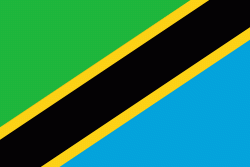Liwale District (Liwale)
Liwale is one of the six districts of the Lindi Region of Tanzania. It is the largest district in Lindi and one of the largest in districts in Tanzania. It is bordered to the north by the Pwani Region, to the east by the Kilwa District, to the south by the Ruangwa District and to the west by the Morogoro Region. Most of Liwale district is within the Nyerere National Park.
According to the 2002 Tanzania National Census, the population of the Liwale District was 75,546.
In April 2013, there was rioting in Liwale over the levels of payments made for cashew nuts. Police used tear gas and a helicopter to control the riots. Approximately 20 houses were burnt down.
The Liwale District is administratively divided into 20 wards:
* Barikiwa
* Kiangara
* Kibutuka
* Kimambi
* Liwale 'B'
* Liwale Mjini
According to the 2002 Tanzania National Census, the population of the Liwale District was 75,546.
In April 2013, there was rioting in Liwale over the levels of payments made for cashew nuts. Police used tear gas and a helicopter to control the riots. Approximately 20 houses were burnt down.
The Liwale District is administratively divided into 20 wards:
* Barikiwa
* Kiangara
* Kibutuka
* Kimambi
* Liwale 'B'
* Liwale Mjini
Map - Liwale District (Liwale)
Map
Country - Tanzania
 |
 |
| Flag of Tanzania | |
Many important hominid fossils have been found in Tanzania, such as 6-million-year-old Pliocene hominid fossils. The genus Australopithecus ranged across Africa between 4 and 2 million years ago, and the oldest remains of the genus Homo are found near Lake Olduvai. Following the rise of Homo erectus 1.8 million years ago, humanity spread all over the Old World, and later in the New World and Australia under the species Homo sapiens. H. sapiens also overtook Africa and absorbed the older species of humanity. Later in the Stone and Bronze Age, prehistoric migrations into Tanzania included Southern Cushitic speakers who moved south from present-day Ethiopia; Eastern Cushitic people who moved into Tanzania from north of Lake Turkana about 2,000 and 4,000 years ago; and the Southern Nilotes, including the Datoog, who originated from the present-day South Sudan–Ethiopia border region between 2,900 and 2,400 years ago. These movements took place at about the same time as the settlement of the Mashariki Bantu from West Africa in the Lake Victoria and Lake Tanganyika areas. They subsequently migrated across the rest of Tanzania between 2,300 and 1,700 years ago.
Currency / Language
| ISO | Currency | Symbol | Significant figures |
|---|---|---|---|
| TZS | Tanzanian shilling | Sh | 2 |
| ISO | Language |
|---|---|
| AR | Arabic language |
| EN | English language |















